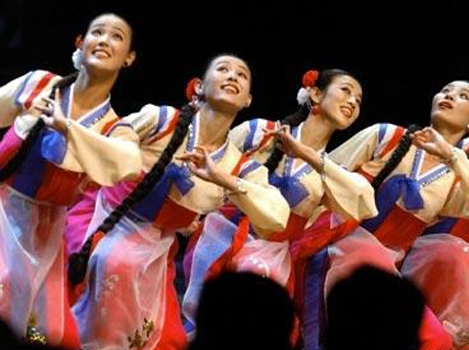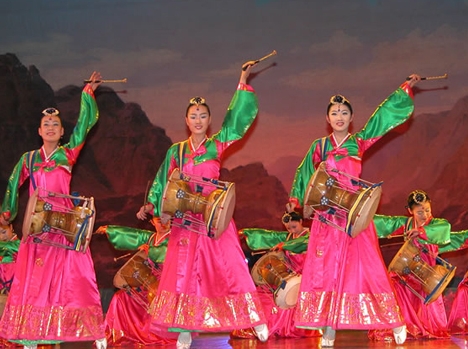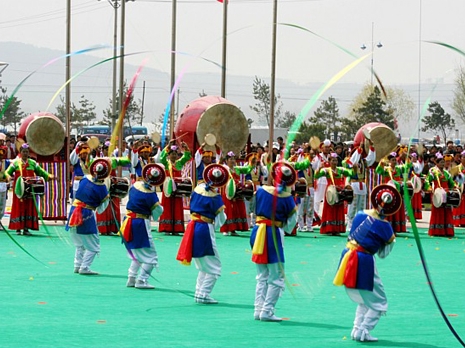
The Korean ethnic people are good at singing and dancing. It's a common practice for the Korean people, men and women, old and young, to dance trippingly to the accompaniment of drumbeats and the gayageum (a traditional Korean zither-like string instrument). The Korean ethnic people living at the foot of the Changbai Mountain in Northeastern China have long been engaged in rice planting. To make it easier for growing and managing rice in a vast area, they tend to work collectively with coordinated efforts.
Every time they go to the field, they take their "flat drums" and "suona horns" along with farm tools. During a break, they'll put up an improvised dancing show to rhythmic drumbeats, driving away fatigue with joyous singing and dancing. With the progression of time, the improvised dancing and singing has become an entertaining folk dance of the Korean people and is performed in various folk activities.

The folk dance, known as "nongak", or "farmer's dance", is a representative Korean folk performance bearing some features of ancient sacrificial rituals. Originating from farm work, the dance is generally performed in two forms: 1) a plotted show featuring dances and mimes; 2) joyous traditional dance with mass participation during the New Year and harvest celebrations.
To perform the dance on a large scale, nongak dance teams from all villages will be sent to the local celebrations. Each team is led by the "order flag" and "farmer flag" holders, followed by a man serving as a general coordinator, who controls the ritual group composed of a band with various instruments and all actors wearing costumes. A team of performers comes next.

A nongak dance show is made up of 12 parts, including "small drum dance" by young men, "human pyramid" by children, traditional "flat drum dance" by a group of people, "hourglass drum dance" by both male and female dancers, "fan dance" originating from ancient "sorcerer's dance" by multiple people holding big floral fans, imitative "crane dance" and finally, the most impressive "sangmo dance" by male dancers. The dances become more artistically beautiful as the show goes on.
